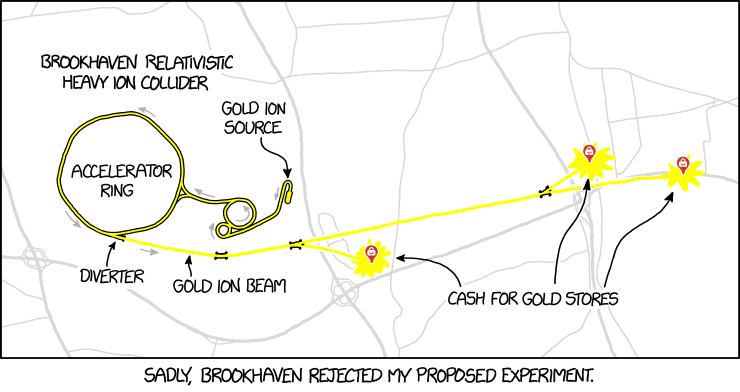
Shared posts
BaT Auction: Modified 1976 Jaguar XJ6 Coupe
Joe ElliottIf you’ve ever craved that gorgeous XJ()C body, but don’t want to trust a Jag built in the ‘70s under BL ownership, try this.
This 1976 Jaguar XJ6 coupe is the result of a two-year project during which a 4.0-liter AJ16 inline-six, four-speed automatic transmission, wiring, and electronics were transplanted from a 1995 Jaguar XJS convertible. The car has been refinished in Opalescent Silver over tan leather, and other modifications consist of an aftermarket Bluetooth stereo and speakers, an auto-dimming rearview mirror, and one-touch down power windows. New belts, hoses, spark plugs, and fluids were reportedly installed 3k miles ago. This XJ6 is offered with a clean New York title in the seller’s name.

Formerly finished in blue, the body was sanded to primer and underwent dent repair prior to being repainted in Opalescent Silver. Pictures of the work in progress and the resulting finish can be seen in the gallery below. European-market bumpers and headlights were retained, and amber inboard lights were added.

Stock 15″ wheels wear 215/70 Goodyear Regatta 2 tires with 2015 date codes. Suspension components and bushings are said to have been transplanted from the 1995 XJS, as were the front and rear outboard disc brakes and ABS. Bilstein Comfort shock absorbers were fitted at each corner.

Tan leather covers power-adjustable XJ12C-style seats with wide pleats, heating, and memory. Wiring and electronic modules are reportedly from the donor XJS in full, including those for the climate control, cruise control, and power mirrors, with the latter dipping on the passenger side when the car is put into reverse. A Gentex self-dimming rearview mirror replaces the stock version, and the door panels have been modified to accommodate the speaker grilles and seat controls from the XJS.

The dash was sourced from an XJ6 Vanden Plas and houses instrumentation from a 1986 XJ6 Series III, including a 140-mph speedometer, a tachometer, and gauges for oil pressure, voltage, fuel, and coolant temperature. Just over 25k miles are shown on the five-digit odometer, approximately 3,000 of which have been added by the seller. Total chassis mileage is unknown. An aftermarket Kenwood stereo with Bluetooth has been fitted, and cupholders have been installed in place of the ashtrays in the center console.

The 4.0-liter AJ16 inline-six was sourced from a 1995 XJS and is paired with a four-speed ZF 4HP24 automatic transmission featuring sport mode from the same vehicle. The upper radiator support is a modified XJS part, and the air filter housing was also shortened to fit. The emissions and evaporative components, catalytic converter, and exhaust system are said to have come from the donor XJS. Belts, hoses, and spark plugs were replaced approximately 3k miles ago.

The engine and transmission mounts use factory bolt holes according to the seller, as does the exhaust system. The stock two-piece driveshaft has been retained, with the front half modified for length. The chassis is said to have been reinforced by doubling and adding structural members as well as welding of several seams. A driving video can be viewed below, and another video is available here.
Upset incidents lead EASA to issue emergency AD on CitationJets with active winglets
Joe ElliottAm I the only one who's been totally expecting this to happen, ever since this systems was first announced?
The European Union Aviation Safety Agency (EASA) issued an emergency airworthiness directive (2019-0086-E) in the wake of recent in-flight upset incidents involving Cessna CitationJets, modified to have Tamarack ATLAS winglets.
The active load alleviation system (ATLAS), when operational, deflects the Tamarack active control surfaces (TACS) on the outboard wings. This system can aerodynamically “turn off” the winglet in specific conditions, thus dumping additional loads. Load alleviation enables a substantial increase in aspect ratio without the need for wing reinforcement and added weight, according to Tamarack. The modification is available for Cessna CitationJet models.
Recently, occurrences have been reported in which ATLAS appears to have malfunctioned, causing upset events where, in some cases, the pilots had difficulty to recover the aircraft to safe flight. Investigation continues to determine the cause(s) for the reported events. This condition, if not corrected, could lead to loss of control of the aircraft, EASA states.
The AD issued by EASA requires the Tamarack ATLAS to be deactivated and the TACS to be fixed in place. It also requires implementation of operational limitations and repetitive pre-flight inspections by amending the applicable flight manual.
Within 100 flight hours, owners must contact the ATLAS-manufacturer for modification instructions.


The post Upset incidents lead EASA to issue emergency AD on CitationJets with active winglets appeared first on ASN News.
any mp3
The Worst Things For Sale is Drew's blog. It updates every day. Subscribe to the Worst Things For Sale RSS!
List of accidents involving brand new passenger aircraft
Two recent accident involving brand new Boeing 737 MAX aircraft caused a global grounding of the type over fears relating to a malfunctioning safety feature specific to the 737 MAX. How does the age of both aircraft relate to previous aircraft accidents?
Focussing on fatal aircraft accidents involving passenger flights, the ASN databases shows (for available data! *) that there was at least one aircraft that crashed within a month of having first flown. A Braniff Lockheed Electra crashed 25 days following its first flight and just 11 days after having been delivered to the airline. A subsequent accident in March 1960 under similar circumstances revealed an engine mount problem on the outboard engines that allowed propeller oscillations to be transmitted to the wings, resulting in a structural failure of the wing in flight. This finding led to operational speed restrictions of the aircraft before modifications were carried out.
| Age (days) | Date | Aircraft type | Operator | Fatalities |
|---|---|---|---|---|
| 25 | 1959-09-29 | Lockheed L-188A Electra | Braniff | 34 |
| 34 | 1967-03-11 | DHC-6 Twin Otter 100 | Aeralpi | 4 |
| 38 | 2006-09-29 | Boeing 737-8EH | Gol | 154 |
| 52 | 1968-03-05 | Boeing 707-328C | Air France | 63 |
| 69 | 1959-02-03 | Lockheed L-188A Electra | American Airlines | 65 |
| 72 | 1960-01-19 | Caravelle | SAS | 42 |
| 74 | 1961-09-23 | Fokker F-27 Friendship | THY | 28 |
| 75 | 1968-04-20 | Boeing 707-344C | SAA | 123 |
| 87 | 1948-01-30 | Avro 688 Tudor 1 | BSAA | 31 |
| 90 | 1965-08-16 | Boeing 727-22 | United Airlines | 30 |
| 91 | 2018-10-29 | Boeing 737 MAX 8 | Lion Air | 189 |
| 94 | 1989-01-08 | Boeing 737-4Y0 | BMA | 47 |
| 95 | 1968-11-23 | DHC-6 Twin Otter 200 | Cable Commuter | 9 |
| 107 | 1961-09-17 | Lockheed L-188C Electra | Northwest | 37 |
| 107 | 1962-07-19 | DH-106 Comet 4C | United Arab | 26 |
| 118 | 1961-09-12 | Caravelle III | Air France | 77 |
| 119 | 1962-06-22 | Boeing 707-328 | Air France | 113 |
| 125 | 1977-09-08 | DHC-6 Twin Otter 300 | Burma Airways | 25 |
| 126 | 1934-12-20 | Douglas DC-2 | KLM | 7 |
| 131 | 2019-03-10 | Boeing 737 MAX 8 | Ethiopian Airlines | 157 |
Looking at flight hours instead of age since first flight, the ASN databases shows (again, for available data! *):
| Flight hours | Date | Aircraft type | Operator | Fatalities |
|---|---|---|---|---|
| 19 | 1948-07-01 | Fiat G.212PW | ALI | 8 |
| 35 | 1948-08-01 | Latécoère 631 | Air France | 52 |
| 46 | 1968-03-05 | Boeing 707-328C | Air France | 63 |
| 47 | 1926-08-18 | Blériot 155 | Air Union | 4 |
| 51 | 1949-05-13 | Ilyushin Il-12P | Aeroflot | 25 |
| 70 | 2002-12-23 | Antonov An-140 | Aeromist Kharkiv | 44 |
| 92 | 1949-08-25 | Ilyushin Il-12P | Aeroflot | 14 |
| 109 | 1960-02-26 | Antonov An-10A | Aeroflot | 32 |
| 111 | 1971-05-23 | Tupolev Tu-134A | Aviogenex | 78 |
| 111 | 1961-09-23 | Fokker F-27 | THY | 28 |
| 113 | 1948-09-04 | Lisunov Li-2 | Aeroflot | 6 |
| 124 | 1974-05-02 | Yakovlev Yak-40 | Aeroflot | 1 |
| 124 | 1961-07-11 | Douglas DC-8-12 | United Airlines | 17 |
| 128 | 1969-03-20 | Ilyushin Il-18D | United Arab | 100 |
| 132 | 1959-09-29 | Lockheed L-188A Electra | Braniff | 34 |
| 154 | 1963-04-04 | Ilyushin Il-18 | Aeroflot | 67 |
| 164 | 1966-10-01 | Douglas DC-9-14 | West Coast Airlines | 18 |
| 166 | 1947-12-18 | Ilyushin Il-12P | Aeroflot | 7 |
| 188 | 1993-03-05 | Fokker 100 | Palair | 83 |
| 202 | 2006-09-29 | Boeing 737-8EH | Gol | 154 |
The LionAir Boeing 737 MAX 8 that crashed in 2018 had logged 895 flying hours; total hours for the Ethiopian aircraft has not yet been reported.
Important notes:
- For 54% of all accidents the first flight date nor total aircraft time in flight hours are known. These lists can thus only be used as indicative.
- For most Russian accidents just the aircraft’s flight hours are known, hence the over-representation of these accidens in the flight hours-table.
The post List of accidents involving brand new passenger aircraft appeared first on ASN News.
Aviation Safety Network releases 2018 airliner accident statistics
The Aviation Safety Network today released the 2018 airliner accident statistics showing a total of 15 fatal airliner accidents, resulting in 556 fatalities.
Despite several high-profile accidents, the year 2018 was one of the safest years ever for commercial aviation, Aviation Safety Network data show. Yet, last year was worse than the five-year average.
Over the year 2018, the Aviation Safety Network recorded a total of 15 fatal airliner accidents [1], resulting in 556 fatalities. This makes 2018 the third safest year ever by the number of fatal accidents and the ninth safest in terms of fatalities. The safest year in aviation history was 2017 with 10 accidents and 44 lives lost.
Looking at that five-year average of 14 accidents and 480 fatalities, last year was worse on both accounts.
Twelve accidents involved passenger flights, three were cargo flights. Three out of 15 accident airplanes were operated by airlines on the E.U. “blacklist”, up by two compared to 2017.
Given the estimated worldwide air traffic of about 37,800,000 flights, the accident rate is one fatal accident per 2,520,000 flights.
Reflecting on this accident rate, Aviation Safety Network’s CEO Harro Ranter stated that the level of safety has increased significantly: “If the accident rate had remained the same as ten years ago, there would have been 39 fatal accidents last year. At the accident rate of the year 2000, there would have been even 64 fatal accidents. This shows the enormous progress in terms of safety in the past two decades.”
Looking back at the past five years, one thing is clear: Loss of Control accidents are a major safety concern as this type of accident was responsible for at least ten of the 25 worst accidents. Most of those accidents were not survivable.
[1] Statistics are based on all worldwide fatal commercial aircraft accidents (passenger and cargo flights) involving civil aircraft of which the basic model has been certified for carrying 14 or more passengers.
Consequently, the April 11 accident involving an Algerian Air Force IL-76 transport plane that killed 257 is not included. When including military transport aircraft the total number fatalities would be 917 in 25 fatal accidents.
The Aviation Safety Network is an independent organisation located in the Netherlands. Founded in 1996. It has the aim to provide everyone with a (professional) interest in aviation with up-to-date, complete and reliable authoritative information on airliner accidents and safety issues. ASN is an exclusive service of the Flight Safety Foundation (FSF). The figures have been compiled using the airliner accident database of the Aviation Safety Network, the Internet leader in aviation safety information. The Aviation Safety Network uses information from authoritative and official sources.
More information:
- Aviation Safety Network website
- Data tables with 2018 accident list and statistics
- Overview of all fatal airliner accidents in 2018
Reporters: join our press email-list now to get our press releases in your inbox.
Harro Ranter
the Aviation Safety Network
e-mail: hr@aviation-safety.net
twitter: @AviationSafety
The post Aviation Safety Network releases 2018 airliner accident statistics appeared first on ASN News.
Study: Evaluating Small UAS Near Midair Collision Risk
In a recent study, Embry-Riddle Aeronautical University researchers revealed results from a small drone (sUAS) detection study performed near Daytona Beach International Airport in Florida, USA.
To gather their data, the research team secured a DJI AeroScope – a passive radio-frequency sensor designed to detect, track, and record UAS activity. During the 13-day sampling period, researchers detected 73 different DJI-manufactured drones that made 192 separate flights.
Researchers also collected valuable operator behavior data, including common sUAS flight locations, times, and altitudes.
It was found that 12 percent of all detected drones were flying near unimproved land and parks. More than three-fourths were flying in residential neighborhoods or near single-family homes. Another 21.5 percent hovered above commercial, industrial or public properties, the researchers reported.
The researchers compared detected sUAS activity with locations and altitudes prescribed by the FAA’s UAS Facility Maps. According to the FAA, “UAS Facility Maps shows the maximum altitudes around airports where the FAA may authorize Part 107 operations without additional safety analysis.” More than one-fifth of the 177 flights were flying higher than the safe altitude prescribed for their operating area. Moreover, researchers compared detected UAS operations to historical manned aircraft flight data, revealing several near encounters.
The researchers suggested that drone manufacturers should more frequently incorporate a technology called “geofencing,” which would prevent sUAS from accidentally entering restricted areas. The authors also proposed that the FAA could consider making more information on sUAS activity available to aircraft pilots.
The post Study: Evaluating Small UAS Near Midair Collision Risk appeared first on ASN News.
running i can barely
The Worst Things For Sale is Drew's blog. It updates every day. Subscribe to the Worst Things For Sale RSS!
Victim Mentality 2018
I’m a day late posting this here, as I was in Portland, OR over the weekend for my cartoonist pal Matt Bors’ wedding. This week’s comic addresses a longstanding trope of the right, that “liberals” wallow in a “victim mentality” that makes them weak and whiny, unlike conservatives, who obviously never complain about anything. Of course, we have seen right-wing assertions of of victimhood on full display recently, from the White House Correspondents Dinner controversy to the strangely sympathetic tone some have taken towards so-called “incels” in the wake of the Toronto massacre. Indeed, one might say contemporary American conservativism has become an unparalleled culture of grievance.
Pyro-brainiacs set new record with waste-heat-into-electricity study
Spark off questions from burny laptop, melty server and hot data centre havers
Californian scientists have come up with a way of converting waste heat from electronics back into electricity with improved efficiency, according to a study in Nature Materials.…
Ass-troplastic! Printing parts from p.. er... human waste
Boffins flushed with success as new uses found for cosmic cack
Researchers reckon some smart bacteria and a 3D printer could solve the twin challenges of transporting materials on a journey to Mars and dealing with all the solid waste generated by space-faring humans.…
coffee insurance
The Worst Things For Sale is Drew's blog. It updates every day. Subscribe to the Worst Things For Sale RSS!
Report: Airbus A320 returns after engine ingested clipboard during departure from Auckland
Joe ElliottWho does that?
The post Report: Airbus A320 returns after engine ingested clipboard during departure from Auckland appeared first on ASN News.




















